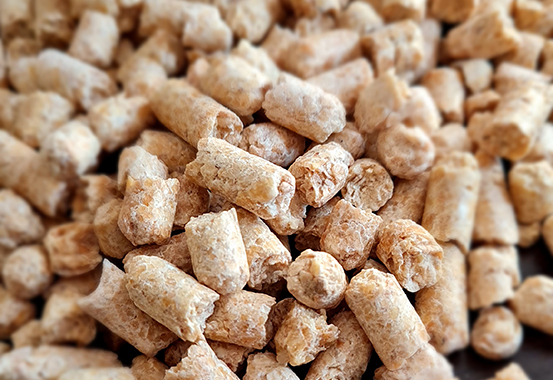- Home
- About
-
Our Products
- Grains
- Oil seeds
- Meals
- Oils
- Derivate
- UBM Group
- UBM Community
- Press
- Contact
Soybean meal in pountry feed
The poultry industry, including broilers, turkeys and laying hens, is one of the major user of soybean meal. Broilers and turkeys consume about 44 percent of all the soybeans used by livestock in the United States, with layers consuming an additional 7 percent, for a total of 51 percent.

It is estimated that more than 98 percent of the plant protein used in poultry feeds is from soybean meal, with more than 66 percent of all the protein in poultry diets provided from soybean meal.
Broilers have a high demand for crude protein and amino acids, and thus need a protein source high in amino acids. Results from a recent industry survey indicate that typical amounts of soybean meal added are 29.4 percent in starter feeds, 23.8 percent in grower feeds and 17.8 percent in finisher die
Soybean meal is perhaps the only common protein supplement that is typically included in poultry and swine rations with no limitation as to the quantity used. Soybean meal is an ideal protein supplement for all types of feed. When blended with corn or grain sorghum, soybean meal provides a good balance of all the essential amino acids needed.
The soybean is perfectly integrated into the animal feed regimen, surpassing all other common plant proteins in both total nutrient content and digestible amino acid content. It is a valuable source of protein, amino acids and energy. The poultry breeding industry consumes 49% of the total mass of soybean meal produced. Pigs and cattle consume the next highest percentage of this ingredient.
Romanian farmers started to understand the importance of soy and its derivates:
Soybean meal in swine feed
Soybean meal is the most popular source of supplemental protein in livestock feeds. That popularity derives from its nutrient content and high content of protein.
Soybean meal is the dominant source of supplemental protein in swine diets worldwide, for good reasons. Its amino acid levels are a superb complement to cereal grain proteins in meeting the nutritional needs of pigs.
Soybean meal is also higher in energy than most competing ingredients. Furthermore, its anti-nutritional factors are easily managed through heating.
Conventional soybean meal is lower in crude protein than dehulled soybean meal because soy hulls are used to standardize the protein content to 44 percent. The percentage of protein in dehulled soybean meal can range from 47 to 49 percent.
All the data, analyses and research conclude to one result and one result only: soybean meal is a worldwide product, daily used in feed for poultry and swine., with full package of advantages: